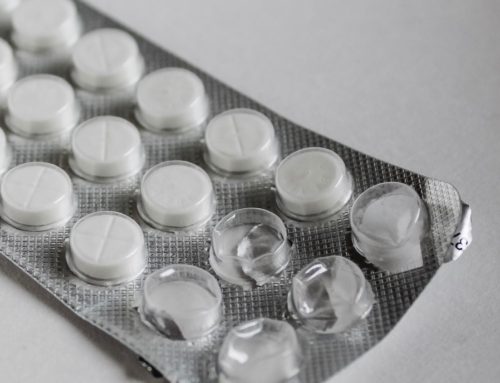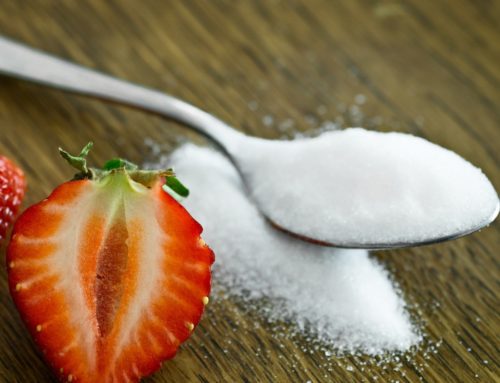Why Should I Eat an Anti-inflammatory Diet?
We need inflammation for many healing responses in the body. However, chronic inflammation is responsible for many damaging effects of common diseases. Eating well helps us balance the healing and harmful sides of inflammation. Since ancient times, inflammation has been described as redness, heat, swelling, and pain. We initially believed that inflammation had simple causes. However, we now know that inflammation is the result of a complex dance of chemical mediators that impact every cell type and organ system. Inflammation creates an environment in the body where many harmful conditions such as arthritis, diabetes, heart disease, and cancer can overwhelm us.
Inflammation can cause many problems, but it’s also the first step in healing. Inflammation sends out signals of tissue damage or invasion by foreign substances to call for a measured response to protect us. Inflammation after an infection or physical injury is healthy and normal. It subsides after the body has healed itself. This capacity for both hurt and harm is why inflammation needs to be managed carefully. You can reduce the harmful side of inflammation by eating well.
How Does Inflammation Cause Chronic Pain?
Let’s talk about some biochemistry.
The link between inflammation and chronic pain is oxidative stress, a part of the inflammatory process. Oxidative stress involves free radicals, high-energy particles that zip around our system like little out-of-control bumper cars and damage our cells. Some free radicals are produced by your body during normal and healthy metabolism. Others are stimulated by outside influences such as smoking, too much sun exposure, toxics in our environment and the wrong foods. Regardless of their source, free radicals damage our cells, cause swelling and pain and interfere with healing.
Nutrition is a Powerful Cure for Chronic Pain
Diet plays a major role in preventing chronic diseases. You’ve likely heard of antioxidants. Here’s why they matter. Antioxidants, mostly derived from food and supplements, are molecules that can deactivate free radicals and make them harmless. 80% of your immune system lies in your digestive tract. If the free radicals are not deactivated by antioxidants, your digestive tract can be constantly attacked. Your immune system will respond with inflammation.
The Top 10 Anti-inflammatory Foods
1. Vegetables
I encourage everyone I know to enjoy more dark-colored leafy greens. They really are a plentiful and remarkable superfood. Packed with vitamins, minerals, and carotenoids, leafy greens likely reduce your risk of cancer. In addition, they are a wonderful source of calcium.
2. Fruit
Like oatmeal, fruits have a large amount of soluble fiber that reduces cholesterol. Enjoy fresh fruit after your meal for a tasty dessert. Here’s an important note: fruit juice isn’t as healthy as you think. Even juices with no added sweeteners naturally contain the sugar of all the fruit it took to make the drink. Fiber makes us feel full and naturally prevents us from eating too much fruit sugar. It’s easier to down five glasses of orange juice than to eat five oranges in one sitting.
3. Berries
Berries are rich in antioxidants. Anthocyanins, the antioxidants that color your berries, combine with quercetins to reduce inflammation and slow down memory loss in seniors. The ellagic acid in berries also prevents cancer. If you have arthritis, the Arthritis Foundation recommends that you eat berries each day to reduce your pain.
4. Beans and lentils
We should all eat more beans. These powerhouses of protein, fiber, and minerals help keep your blood pressure in check. In addition, they contain a lower proportion of starch compared to grains. If you are diabetic, have more beans. Using beans or lentils for a main course with a small amount of meat for flavoring can also stretch the food dollar. For dinner, I often have lentils in salad with vegetables or in a soup. I place lentils in the bottom of a roasting pan and add chicken breasts, sliced onions, and homemade (or store-bought organic) broth. Cover and cook until the chicken is done, add greens, and enjoy. Here’s a recipe for lentil soup.
5. Avocados
Enjoy your guacamole. The monounsaturated fat avocados contain may help reduce blood cholesterol. They also have large amounts of beta-carotene, fiber, and potassium (60% more than bananas, another good source of potassium). Avocados may be high in fat, but don’t shy away from them.
6. Extra-virgin olive oil
The Mediterranean populations have used olive oil as a staple in their diets for centuries to positive effect. “Extra-virgin” refers to the very first cold-pressing of a batch of olives. “Cold-pressed” means that the olives were pressed without heat or chemicals. Cold-pressing preserves the phenolic compounds which may help inhibit genes that cause inflammation. These genes are also related to obesity, type-2 diabetes, and high cholesterol. For a simple and one of the most delicious salad dressings around, mix half a cup of olive oil and add in two tablespoons of lemon juice. Add a pinch of salt and pepper. That’s it!
7. Nuts
Nuts reduce your risk of cardiovascular disease, contain good polyunsaturated fats, and are also rich in arginine. Arginine may help your blood vessels. Nuts are wonderful for you but pack a lot of calories. Definitely enjoy nuts in moderation. Use nuts to replace, not add to, your usual snack. Roasted nuts go rancid quickly so avoid pre-roasted nuts unless you know when they were prepared and intend to eat them soon. Instead, try this. Soak raw nuts for six to eight hours to reduce the phytates. Phytates interfere with the absorption of some of the good nutrients in nuts. Dry them in a dehydrator or in a very low oven with the door partly open.
8. Fish
An analysis of 20 studies suggests that eating one to two 3-ounce servings of fatty fish a week—salmon, herring, mackerel, anchovies, or sardines—reduces the risk of dying from heart disease by 36%. The omega-3 fats in fish reduces blood pressure, improves blood vessel function, and may help ease inflammation. Replace some of your red meat intake with fish. Sautéed, steamed, or baked, fish is versatile and delicious. Fish cooks so quickly that it makes a wonderful weekday dinner.
9. Whole-grain foods
Whole grains are high in dietary fiber which reduces your cholesterol and risk of cardiovascular disease. A bowl of steel-cut oats each day for breakfast is an easy way to add whole grains to your diet. Fiber soaks up water when in the body and moves slowly through the digestive tract, attaching to bile acids along the way and carrying them out of the body. As bile acids are composed of cholesterol, oats reduce your cholesterol level. Fiber also keeps your bowels healthy and makes bowel movements easier to pass.
10. Dark chocolate
Enjoy your dessert! Dark chocolate with at least 70% cocoa is rich in flavanols which may lower blood pressure. Eat dark chocolate in moderation as it is also bursting with calories – two ounces packs about 300 calories. Place a piece of dark chocolate on your tongue, close your eyes, and savor it. You’ll find that you only need a small amount to satisfy your taste buds.
Chew on this
Sometimes the best solutions can be the simplest. Research shows that chronic pain drugs seldom help patients in the long-term. Drugs often seem to ‘work’ only because of their short-term effects.
Nutrition, on the other hand, is proven by our best research to reduce your pain. Fruits, vegetables, and whole grains are also far less expensive than pharmaceutical drugs. Eating a balanced diet is one of the most powerful ways to reduce your pain.
What’s your favorite anti-inflammatory dinner? Share your recipe with us in the comments!




